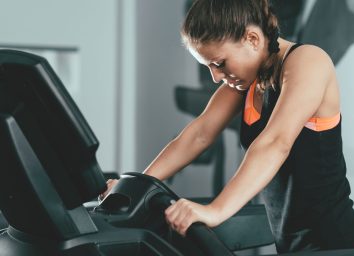Workout Mistakes Damaging Your Body, According to Science
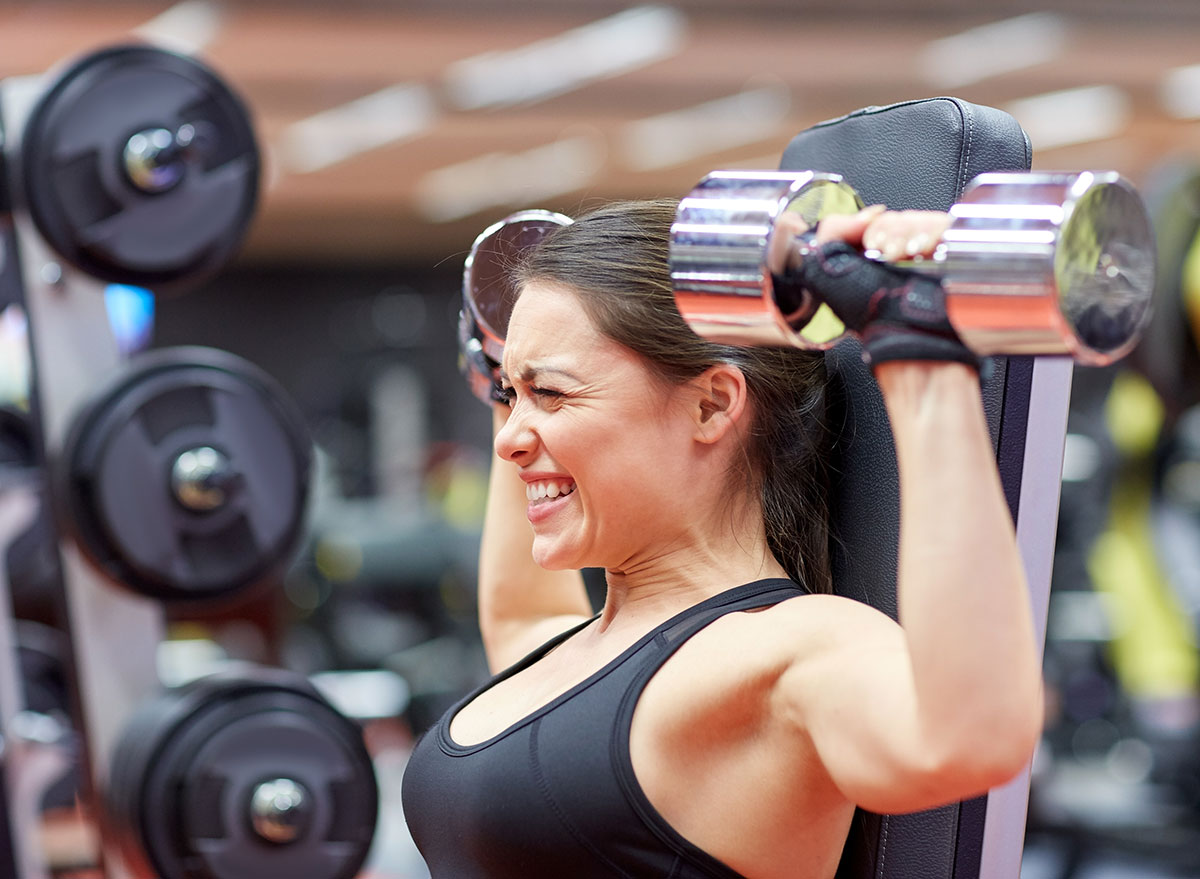
Exercising regularly is one of the best things you can do to ensure a longer life. No kidding, right? You've heard it a zillion times. And the advice is backed by tons of scientific data. For example, a meta-analysis of studies reviewed in the Journal of Aging Research showed that all-cause mortality is decreased by up to 35% in physically active people compared with inactive folks. Exercise slashes every major mortality risk factor across the board: hypertension, type 2 diabetes, obesity, coronary heart disease, stroke, and cancer.
So, there's little evidence that exercising will do you in. Sorry, you can't use self-preservation as a reason to blow off your workout.
But there are some bad workout habits that can have damaging effects on your body. Here below are some exercise mistakes that may harm your body in some way. When you've fixed them properly, optimize your sweat sesh with the 14 Best Foods for Better Workout Results, According to Experts.
Starting a workout without having a cardio checkup first.
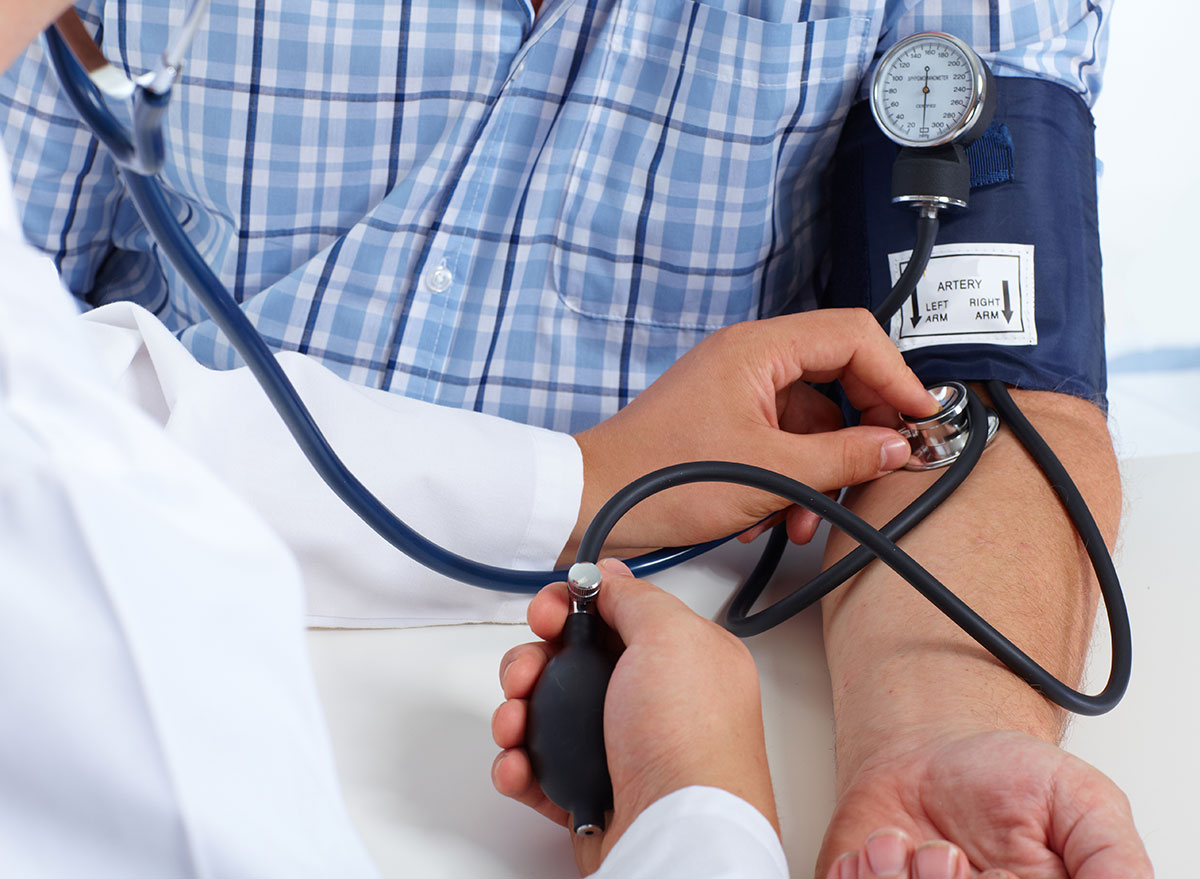
You've heard the standard doctorly advice for years: Get a checkup before starting an exercise program. Most people don't, and that's a misstep that could end up shortening their lives. Here's why: There's a slight risk of heart attack or cardiac complications when you begin an exercise program, especially when starting from ground zero-level fitness. But say you've been exercising regularly without issue. If you have high blood pressure and don't know how your cardiovascular system responds to exercise, you could be setting yourself up for trouble, suggests a study appearing in the Journal of the American Heart Association.
Using data from a long-term U.S. study called the Framingham Heart Study conducted by the National Heart, Lung, and Blood Institute, researchers analyzed participants' blood pressures during and following "submaximal" exercise, that is, exercise slightly below the person's all-out effort. The analysis showed that high systolic blood pressure during exercise and afterward during recovery was associated with two measures of cardiovascular disease risk—thickness of the lining of the carotid artery and thickness of the heart muscle on the left side. On the positive side: the data revealed that people who had good recovery of systolic blood pressure after exercise enjoyed a protective effect from working out, a 17% reduced risk of cardiovascular disease.
"The way our blood pressure changes during and after exercise provides important information on whether we will develop the disease in the future," wrote study author Dr. Vanessa Zanthakis, an investigator for the Framingham Heart Study. So, exercising without knowing if you have hypertension, the silent deadly disease, could ultimately shorten your lifespan. Related: The Easiest Way to Lower Your Blood Pressure.
Too strenuous weight lifting.
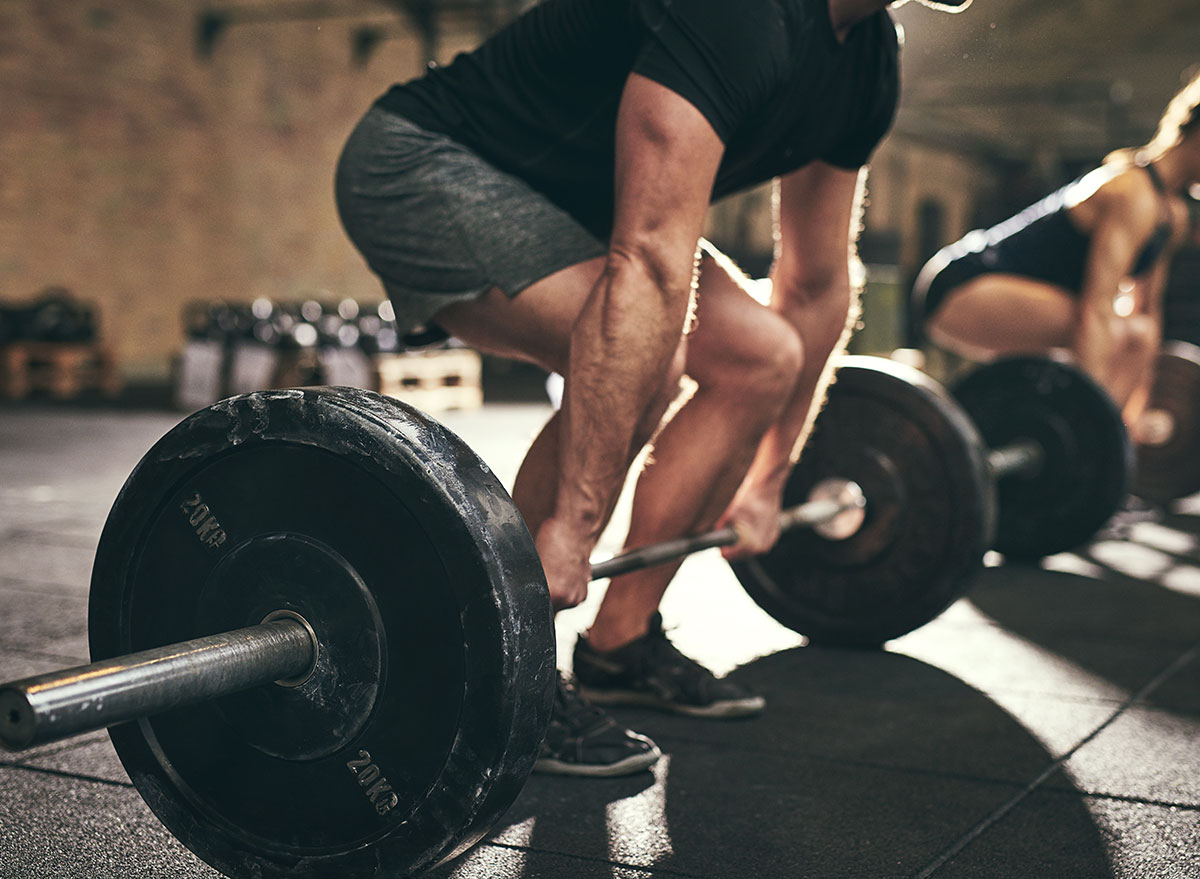
Pushing yourself way too hard in intense, repetitive exercises like weight training, or suddenly increasing exercise intensity when you're out of shape, can result in a rare, but serious muscle-damaging condition called exertional rhabdomyolysis, according to the Journal of the American Academy of Physician Assistants. Also known as rhabdo for short, the condition causes muscle cells to rupture and leak enzymes and proteins into the bloodstream, causing such symptoms as extreme muscle pain and dark urine. Severe cases can result in acute kidney failure, cardiac dysrhythmia, and even death. It can occur in trained athletes as well as out-of-shape people starting an intense workout too quickly. Repetitive eccentric weight lifting (that is exercises that emphasize the muscle extending or lengthening part of a lift), hyperthermia, and dehydration contribute to the risk of rhabdo, according to a review in Sports Health.
Exercising through pain.
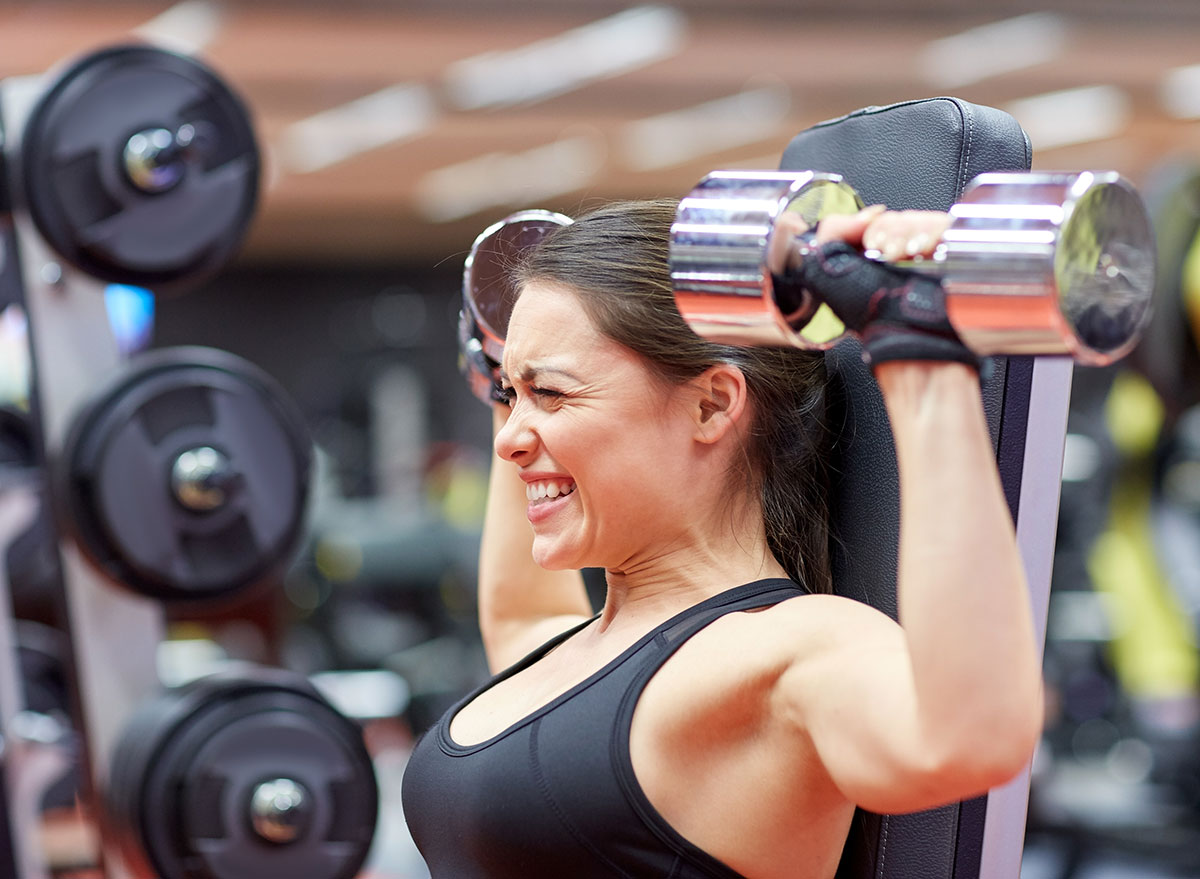
"No pain, no gain," is an outdated muscle-head notion and a myth that's been perpetuated in gyms throughout the country. While fatiguing muscles is the key to growth and strength, pushing yourself through pain is a mistake. "Pain represents injury," sports medicine physician Dominic King, DO told Cleveland Clinic Health Essentials in a blog post. It can be the result of overuse or too much stress placed on a muscle or tendon. "People use to say you need to 'suck it up' or just push through the pain. But pain is your body trying to tell you something, and you have to listen," says Dr. King.
Getting your "asana" kicked in power yoga.
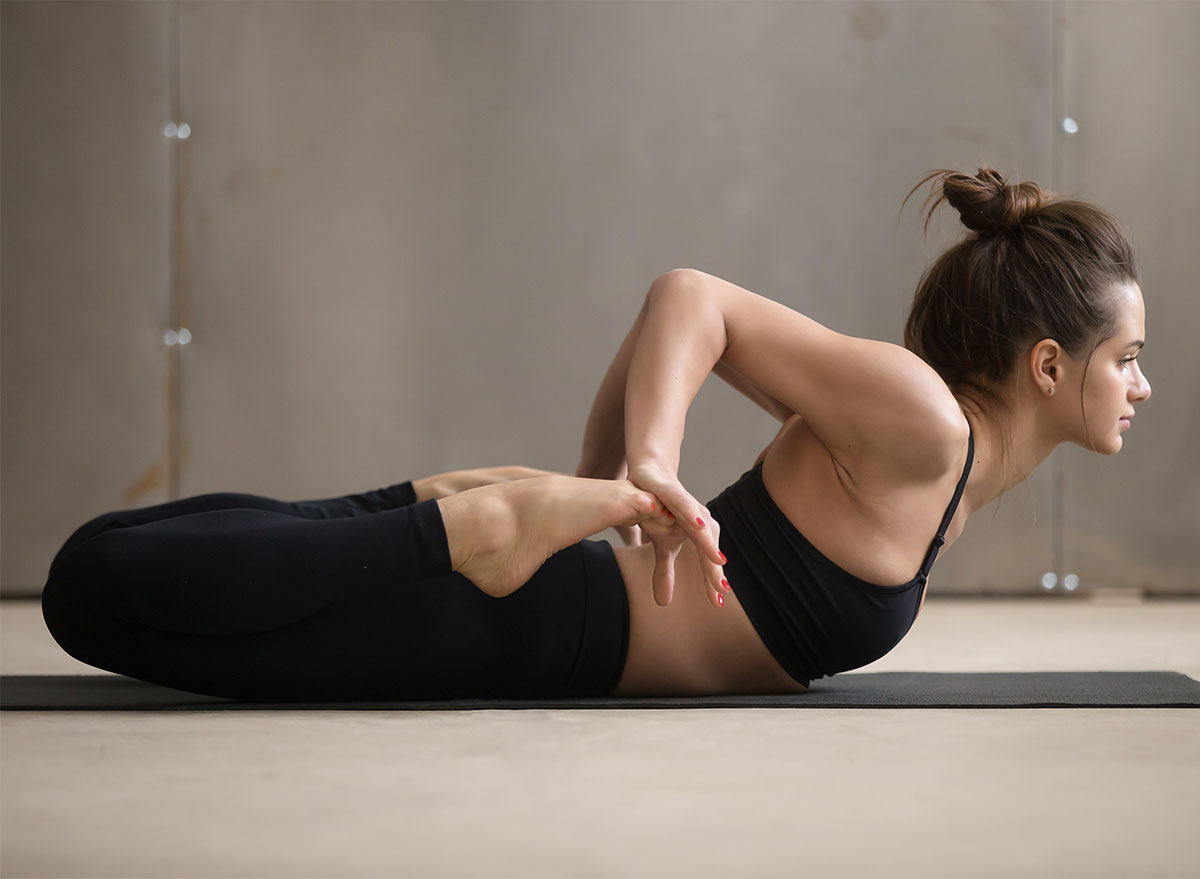
High chronic stress is associated with an increased risk for everything from psychological disorders like depression and low self-esteem to physiological maladies like coronary artery disease and diabetes. It's no wonder then that more than 27 million Americans have embraced the practice of yoga, a popular stress management strategy. But that's if you do Hatha, the meditative-style of yoga, and not necessarily so if you practice Vinyasa style or power yoga, according to a 2020 study in the International Journal of Environmental Research and Public Health.
Researchers in the department of kinesiology at Alabama's Samford University recruited physically active women who did not practice yoga for the study and put them through single, 30-minute sessions of Hatha yoga and Vinyasa yoga separated by 48 hours. Each time, the participants were given a self-reported anxiety questionnaire to complete and pre- and post-session saliva tests to measure levels of the stress hormone cortisol. Results showed a significant reduction in cortisol levels and anxiety after meditative-style yoga but not after power yoga. For more ways to reduce levels of cortisol, check out these 21 Best Foods to Eat When You're Stressed, According to Dietitians.
Exercising in extreme heat.

Every summer you hear a few stories of high school or college football players dying of heatstroke from training or playing in extreme heat conditions. But it doesn't just happen to athletes and it doesn't just occur in summer. More than 600 people in the U.S. die from extreme heat-related incidents each year, according to the Centers for Disease Control and Prevention (CDC). It's been known to even happen indoors in the dead of winter in saunas and hot yoga classes. "Exertional heatstroke (EHS) can affect seemingly healthy athletes even when the environment is relatively cool," says a position statement on heat illness by the American College of Sports Medicine. Heat illness and its most dangerous forms, heat exhaustion and heat stroke, result when the body is unable to cool down and overheats. Symptoms include heavy sweating or not sweating when hot, shortness of breath, nausea, high temperature, and confusion among others.
